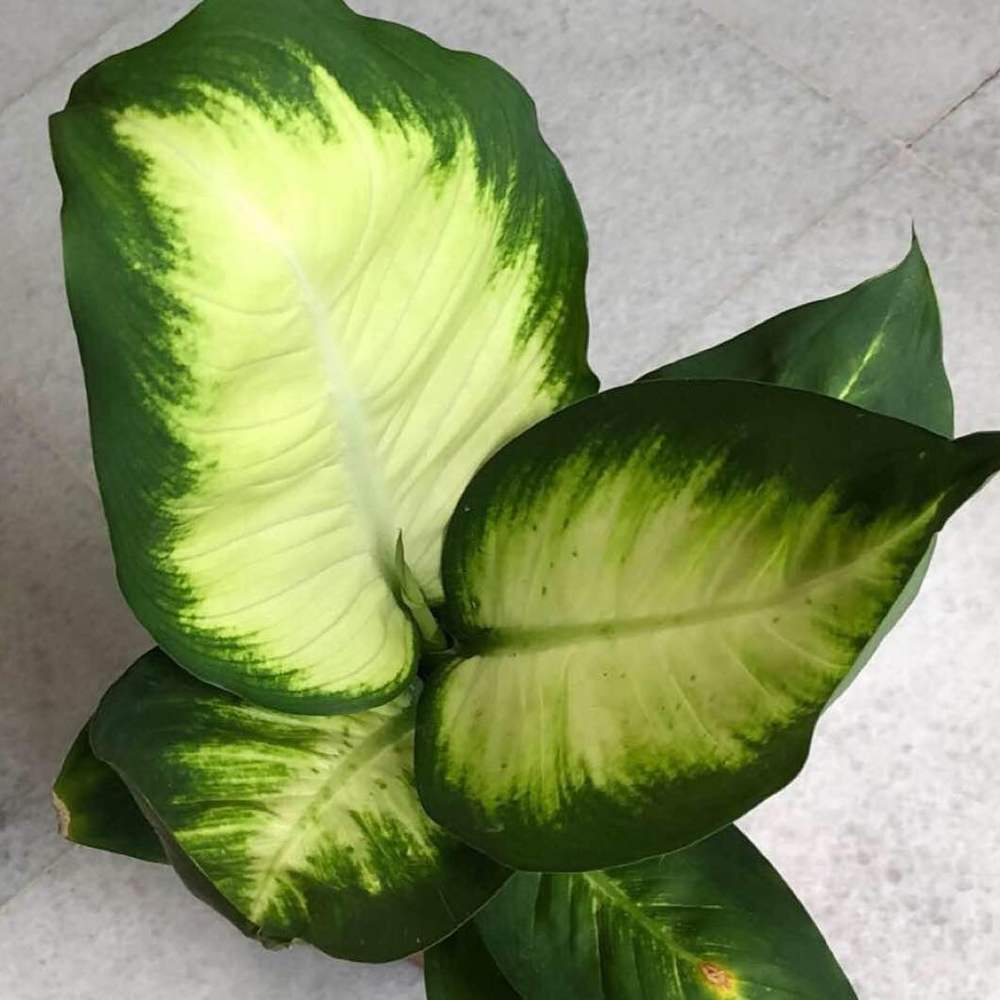植物经验
详细说明
The Dieffenbachia (Dumb Cane) is an extremely common houseplant. It is also one of the easiest to care for. The foliage entails elliptical shaped leaves however the colors can vary greatly between type. Some foliage may be all green, cream with green borders or a mix between the two.
Dieffenbachia requires moist soil, so water frequently. You may also place a tray under the pot with water in it to help in keeping the plants soil moist at all times. This houseplant also requires high humidity levels so misting daily will also help keep the Dumb Cane healthy.
Soil, Potting and Transplanting
The Dieffenbachia plant prefers a well-draining soil. I’ve had excellent results using 2 parts peatmoss and 1 part perlite. A growing soil mix used in African violet care works well also.
A large plant like Dieffenbachia “Tropic Snow” is capable of reaching 4-5 feet and grown in a relatively small pot. The problem is usually not pot size but plant size making the plant top heavy. For top heavy plants use a cachepot to stabalize the top heavy plant
When potting or repotting plants, springtime is best just before the growing season begins. Do not overpot!
This houseplant prefers to be within 5 to 8 feet of a window, but will survive lower light levels. However please caution against placing the plant anywhere near drafty areas. The Dieffenbachia also prefers temperatures above 60 F.
The Dieffenbachia contains a toxic sap thus giving the name Dumb Cane, so please keep out of reach of children or animals that may try and eat the plant. It is one of the many poisonous houseplants you may have in your home.
Common varieties of the Dieffenbachia include the Exotica Compacta, Australian, Tropic Marianne, Paradise, Camille and Tropic Snow.
How to Care for a Dieffenbachia
Plant Problems with dieffenbachia plant can be easily overcome in most situations. The most common problem with growing dumbcane dieffenbachia is too much moisture.
Overwatering is a common problem with many houseplants and the dieffenbachia houseplant is no exception. Plant the dumbcane in a well-draining soil and water lightly, keeping the soil consistently moist, but not soggy. Check the soil to make sure it is dry an inch down before watering the dieffenbachia plant.
Other problems with dieffenbachia plant may be created by improper lighting. When growing dieffenbachia, most varieties do best in a filtered light situation, where bright to moderate light shines through a sheer curtain or other filtering window cover. Filtered light is particularly important in the spring and summer, when the dieffenbachia houseplant is producing new, tender leaves that are subject to sunburn if the light is too bright or shines directly on the plant.
Rotate the dieffenbachia houseplant regularly to provide adequate light to all sides of the plant and prevent it from reaching toward the light on one side.
When growing dumbcane dieffenbachia of various cultivars, check light requirements for the particular plant. Some dieffenbachia plants require low filtered light. Most cultivars do fine with a low light environment; however, growth is slower or stops, but the plant will remain healthy and attractive. When growing dumbcane dieffenbachia, fertilize twice a month to encourage growth and a healthy plant. A houseplant food high in nitrogen can be applied at half strength.
Dieffenbachia Houseplant Problems
Browning bottom leaves on the dumbcane dieffenbachia is normal for the plant; Snip them off to keep the plant tidy.
If other leaves appear bleached, with a webby substance on the underside, check and treat the plant for spider mites with insecticidal soap spray or neem oil. Don’t use chemicals for this issue on the growing dumbcane dieffenbachia, as it often makes the problem worse.
If you notice water droplets on the dumbcane plant, you may wonder, “Why does my dieffenbachia plant drip water?” This is the byproduct of the transpiration process, which is active in most plants.
It’s also important to note that the leaves, if chewed or eaten, can cause temporary swelling of the tongue and throat, leading to a temporary loss of speech and the common plant name of dumbcane. While this is usually not serious, it can cause suffocation. Avoid placing the dumbcane plant where curious children or pets might be tempted to taste it.
Dieffenbachia requires moist soil, so water frequently. You may also place a tray under the pot with water in it to help in keeping the plants soil moist at all times. This houseplant also requires high humidity levels so misting daily will also help keep the Dumb Cane healthy.
Soil, Potting and Transplanting
The Dieffenbachia plant prefers a well-draining soil. I’ve had excellent results using 2 parts peatmoss and 1 part perlite. A growing soil mix used in African violet care works well also.
A large plant like Dieffenbachia “Tropic Snow” is capable of reaching 4-5 feet and grown in a relatively small pot. The problem is usually not pot size but plant size making the plant top heavy. For top heavy plants use a cachepot to stabalize the top heavy plant
When potting or repotting plants, springtime is best just before the growing season begins. Do not overpot!
This houseplant prefers to be within 5 to 8 feet of a window, but will survive lower light levels. However please caution against placing the plant anywhere near drafty areas. The Dieffenbachia also prefers temperatures above 60 F.
The Dieffenbachia contains a toxic sap thus giving the name Dumb Cane, so please keep out of reach of children or animals that may try and eat the plant. It is one of the many poisonous houseplants you may have in your home.
Common varieties of the Dieffenbachia include the Exotica Compacta, Australian, Tropic Marianne, Paradise, Camille and Tropic Snow.
How to Care for a Dieffenbachia
Plant Problems with dieffenbachia plant can be easily overcome in most situations. The most common problem with growing dumbcane dieffenbachia is too much moisture.
Overwatering is a common problem with many houseplants and the dieffenbachia houseplant is no exception. Plant the dumbcane in a well-draining soil and water lightly, keeping the soil consistently moist, but not soggy. Check the soil to make sure it is dry an inch down before watering the dieffenbachia plant.
Other problems with dieffenbachia plant may be created by improper lighting. When growing dieffenbachia, most varieties do best in a filtered light situation, where bright to moderate light shines through a sheer curtain or other filtering window cover. Filtered light is particularly important in the spring and summer, when the dieffenbachia houseplant is producing new, tender leaves that are subject to sunburn if the light is too bright or shines directly on the plant.
Rotate the dieffenbachia houseplant regularly to provide adequate light to all sides of the plant and prevent it from reaching toward the light on one side.
When growing dumbcane dieffenbachia of various cultivars, check light requirements for the particular plant. Some dieffenbachia plants require low filtered light. Most cultivars do fine with a low light environment; however, growth is slower or stops, but the plant will remain healthy and attractive. When growing dumbcane dieffenbachia, fertilize twice a month to encourage growth and a healthy plant. A houseplant food high in nitrogen can be applied at half strength.
Dieffenbachia Houseplant Problems
Browning bottom leaves on the dumbcane dieffenbachia is normal for the plant; Snip them off to keep the plant tidy.
If other leaves appear bleached, with a webby substance on the underside, check and treat the plant for spider mites with insecticidal soap spray or neem oil. Don’t use chemicals for this issue on the growing dumbcane dieffenbachia, as it often makes the problem worse.
If you notice water droplets on the dumbcane plant, you may wonder, “Why does my dieffenbachia plant drip water?” This is the byproduct of the transpiration process, which is active in most plants.
It’s also important to note that the leaves, if chewed or eaten, can cause temporary swelling of the tongue and throat, leading to a temporary loss of speech and the common plant name of dumbcane. While this is usually not serious, it can cause suffocation. Avoid placing the dumbcane plant where curious children or pets might be tempted to taste it.
花相册 (8)
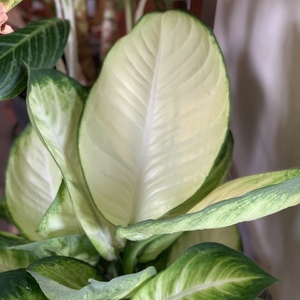
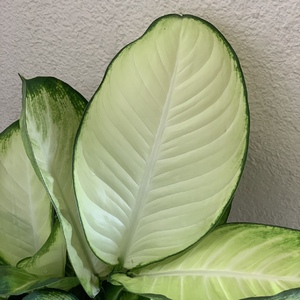
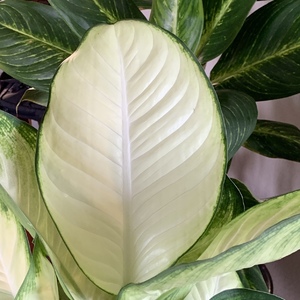
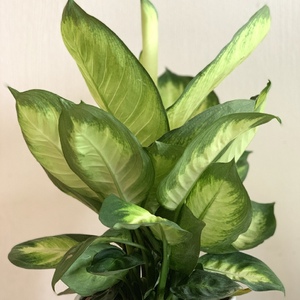
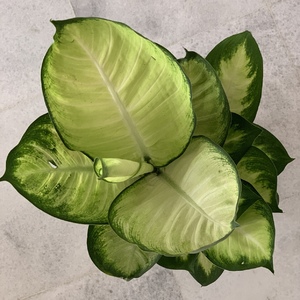
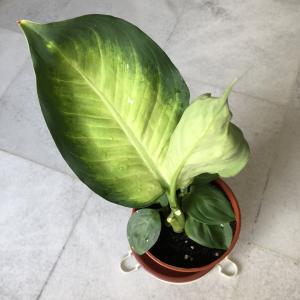
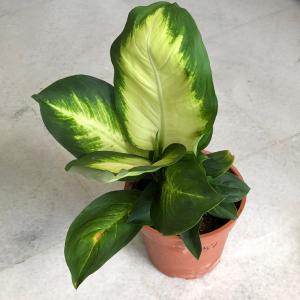
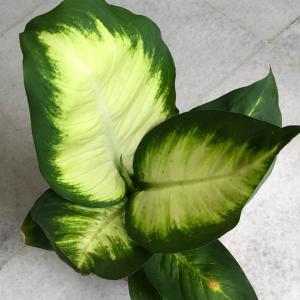
kensong
2019年06月24日

New leaf is a Snow White.






kensong
2019年06月13日

Dieffnbachia Mariana from C&O RM14




kensong
2018年05月27日

Repotted my Dumb Cane because of moldy soil and also mealy bug infestation which was manually removed.


kensong
2018年03月31日

This is my first growing diary.




